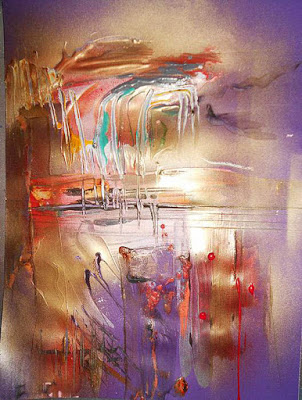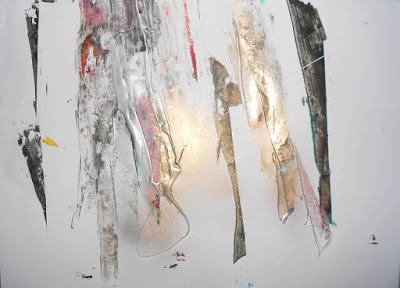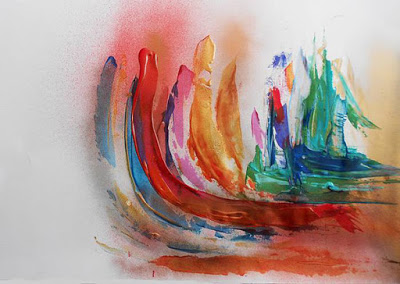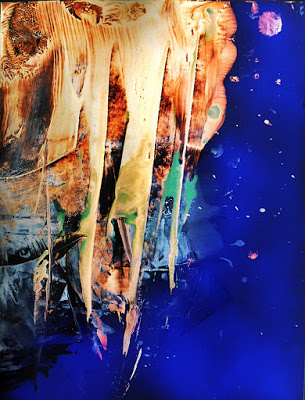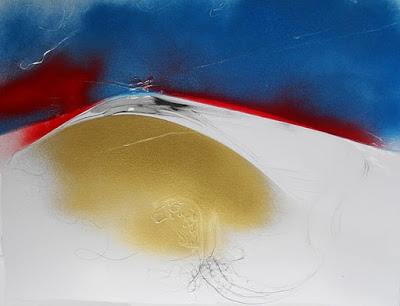How your eyes
trick your mind
Look closer at optical illusions, says Melissa Hogenboom, and they can reveal how you truly perceive reality.
Advertisement
Visual, or optical, illusions show us that our minds tend to make assumptions about the world – and what you think you see is often not the truth.
Throughout history, curious minds have questioned why our eyes are so easily fooled by these simple drawings. Illusions, we have found, can reveal everything from how we process time and space to our experience of consciousness.
Scroll down our interactive guide to find out why.
Early illusions
Illusions have a long history, going as far back as the ancient Greeks.
In 350BC, Aristotle noted that “our senses can be trusted but they can be easily fooled”.
He noticed that if you watch a waterfall and shift your gaze to static rocks, the rocks appear to move in the opposite direction of the flow of water, an effect we now call “motion aftereffect” or the waterfall illusion.
Tracking the flow of the water seems to “wear out” certain neurons in the brain as they adapt to the motion. When you then shift your gaze to the rocks, other competing neurons over-compensate, causing the illusion of movement in the other direction.
Advertisement
Mind shift
The real boom in studying illusions began in the 19th Century. A school of scientists who studied perception – among many other things – created simple illusions to shed light on how the brain perceives patterns and shapes, which kick-started the early theories on how our eyes can play tricks on our mind.
The Ebbinghaus illusion, for example, revealed that our brain makes judgements about size using adjacent objects – and this can be manipulated. The orange circles here are actually the same size.
In-depth view
Around the same time, the Ponzo illusion illustrated that context is also fundamental for depth perception.
It shows that identically sized lines can appear to be different lengths when placed between converging parallel lines. This shows how our sense of perspective works. Like a train track, the slanted lines make us believe the top line is further away.
This confuses the brain, and it overcompensates, making the line appear bigger – as it would have to be in real life to produce those kinds of proportions.
Ebbinghaus
Ebbinghaus
Ponzo
Ebbinghaus
One-track mind
For similar reasons, this may be why the lines in the Muller-Lyer illusion appear to be different lengths. The arrows at each end are tricking the brain into thinking the lines are nearer or further away.
Confused? To understand why, consider how two walls meet the ceiling at the top of a room: you’ll see three lines converging. The brain uses these lines to gauge perspective and distance in 3D space – in other words, that the point of the corner is further away than the lines converging towards it.
One theory is that the arrows on either end of the line in the Muller-Lyer illusion trick the mind into thinking it is looking at a similar 3D scene – for example, the arrows on the middle line are similar to a wall-ceiling corner. This nudges the brain into thinking the line is further away, and again, it overcompensates, making it appear longer than the other lines.
Tall story
That isn’t the only way simple lines can warp the way the mind processes the world – and there isn’t always a simple explanation. In the late 1800s, Hermann von Helmholtz first demonstrated that a simple square made up of vertical lines looks shorter and wider than a square made up of horizontal lines.
This is why wearing horizontally striped clothes will make the wearer appear taller and slimmer – contrary to fashion advice.
Researchers suspect the reason is to do with the way we estimate “filled space”, but they’re still not sure why it happens.
Helmholtz
Muller-Lyer
Early illusions like this appeared at a ground-breaking time for the study of perception, says illusion historian Nicholas Wade from the University of Dundee in Scotland.
“They were of interest theoretically because they went against the prevailing view that you could understand vision if you understood the way in which an image is formed in the eye.
“The phenomena were small but reliable; they were experimentally tractable and it generated this incredible boom of variations on simple figures.”
Yet this period also saw a series of misguided attempts to find a ‘unifying theory’ of illusions. The literature on illusions is “littered with over-interpretations”, says Wade.
As researchers would later discover, our reactions to illusions can be even more complicated than the early pioneers realised.
20th Century
The 20th Century saw little in the way of a breakthrough in the field of illusions.
But the quest to understand how we process the world continued, and this resulted in some exciting findings about perception.
For example, advances in technology allowed David Hubel and Torsten Wiesel to discover that certain neurons in the brain’s visual cortex fired only when objects were orientated at certain angles – so, for instance, specific neurons fire when you look at a square and a triangle. The finding earned them a Nobel prize in 1981.
Yet where scientists left off, artists moved forward...
In the 1960-70s illusions inspired a style called optical art, or "Op-Art". Victor Vasarely is widely regarded as the father of this movement, and some of his work is studied by scientists today. For example, research using his “nested squares illusion”, similar to the image below, suggests that the brain identifies shapes using corners rather than lines.
21st Century
Fast forward to the early 2000s and there was a resurgence in illusion research, including looking at the strange way our brains process time.
One school of thought suggests that some illusions highlight the way the brain constantly tries to predict what will happen. The theory goes that many illusions show that we try to predict the future to compensate for the slight delay between an event and our conscious perception of it.
The light from these words you are reading has to reach your eye, before a signal travels to the brain to be processed – this takes time, which means the world you perceive is slightly in the past. Mark Changizi, a theoretical neurobiologist, believes the brain may make predictions about your surroundings in order to “perceive the present”.
The light from these words you are reading has to reach your eye, before a signal travels to the brain to be processed – this takes time, which means the world you perceive is slightly in the past. Mark Changizi, a theoretical neurobiologist, believes the brain may make predictions about your surroundings in order to “perceive the present”.
Zoetropes in the 1800s tricked the brain into seeing motion where there is none
In a study Changizi worked on with Shinsuke Shimojo, of Caltech’s experimental psychology lab in California, they wrote that a whole class of classic “coffee-table” geometrical illusions fit with this theory, such as the Hering illusion.
The Hering illusion, says Changizi, features radial lines that give the illusion of movement, similar to the scene we see as we move forward in the real world. Our brain has therefore evolved to treat these radial lines or streaks as if they are motion, he says.
“In real life when those mechanisms are working well, when you’re moving forward, then those radial lines happening on the back of your eye really are due to real-life motion. The reason they are only misperceptions in the lab is because radial lines trick your brain into thinking there’s motion.”
Hering
Hering
Today, illusion research is booming once more. Technology advances now allow scientists to peer inside our brains as we look at illusions, and to begin to understand the underlying mechanisms going on inside our head.
Functional magnetic resonance imaging (fMRI) allows researchers to analyse how the neurons in our brain respond to individual illusions.
Square eyed
For example, a brain-imaging study of people looking at the Necker Cube, right, showed that the brain can “flip” between two different views, as it attempts to translate a two-dimensional drawing on a page into a three-dimensional cube. In other words, it confirmed that the brain is tricked into perceiving the cube as a 3D object.
Competing neurons
Or consider the Hermann grid: we see grey dots in the intersections between the white and black grid even though they are not actually there. But look directly at one of the grey dots and it disappears. Based on brain-scanning research, one explanation is that our neurons are competing with each other to see the light and dark parts of the image.
However, these recent advances do not mean that all illusions can be explained. Even this explanation for the Hermann grid – an illusion which is more than a hundred years old – has been disputed, since it can’t account for the fact that the effect changes when the grid has curved lines instead of straight ones.
New illusions
While we know that different areas of the brain deal with colour, form, motion and texture, how the brain encodes and combines this information into a coherent picture remains poorly understood.
What’s more, new illusions, and variants on old ones are appearing all the time. Vision researchers hold an annual competition, now in its 10th year, to find the best new illusions. One of the judges is visual neuroscientist Susana Martinez-Conde from the Barrow Neurological Institute in Arizona. The contest has a selfish motivation of sorts, she says: she wants to keep an eye out for interesting new illusions that will help her to study the brain.
2014’s winning entry is a novel take on the 19th Century Ebbinghaus Illusion. This new version is dynamic, which makes the effect much stronger. “It’s like the Ebbinghaus effect on steroids,” says Martinez-Conde. Just like the original, the illusion highlights that the brain always perceives the size of objects in the context of those that surround them. But if you continually vary this context, then the effect gets even stronger, she explains.
“Many of the newer illusions are takes on the classical versions as the technology has now opened the doors to revisit them," she says.
Martinez-Conde is now building on the work of some of the 19th Century researchers. It was Helmholtz, for example, who first realised that our eyes make rapid movements called saccades.
To experience them, gently put a finger on your eye lid and move your eye. You will see that the world will start to appear jittery, like a series of snapshots. We don’t notice our eye darting about like this because our brain smoothes things out when constructing what we see.
Martinez-Conde realised that these saccades might help to explain why we see movement in this image, the snake illusion.
This is known as apparent motion. The snake illusion occurs because there's so much information hitting different parts of our retina at the same time. All this detail is sent to our visual cortex at once, and the resulting confusion tricks the brain into thinking that movement is taking place.
This also happens in the real world when we're in a fast-moving object like a train, for example. Sure enough, fMRI scans have shown that the same neurons that respond to movement are responding when we look at the image above. Martinez-Conde and colleagues found that suppressing these saccades in people momentarily stops the illusion. Why? She thinks it’s because, with every saccade, the retinal image is “refreshed”, and this overwhelms the visual cortex again with a new scene. If you stop the eye movement, however, the brain adapts and the apparent motion stops.
All of this research points to one thing: our visual system remains too limited to tackle all of the information our eyes take in. “For that our brain would need to be bigger than a building, and still then it wouldn’t be enough,” says Martinez-Conde.
And so our minds take shortcuts. Like betting for the best horse in a race, our brain constantly chooses the most likely interpretation of what we see.
Seeing, then, is certainly not always believing.














